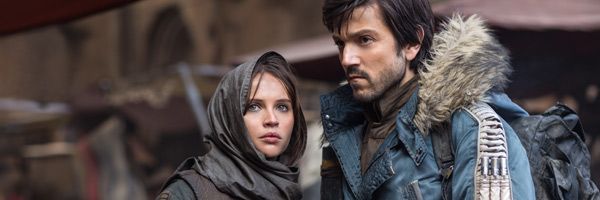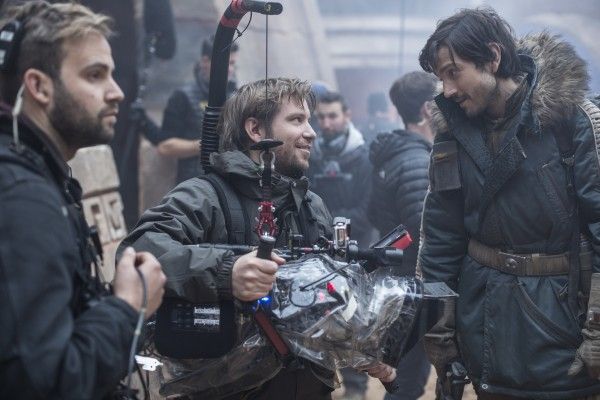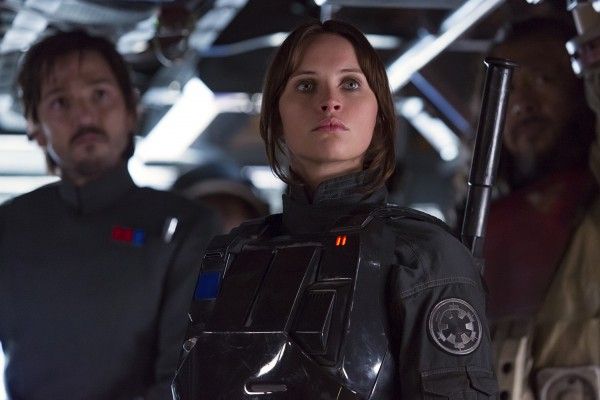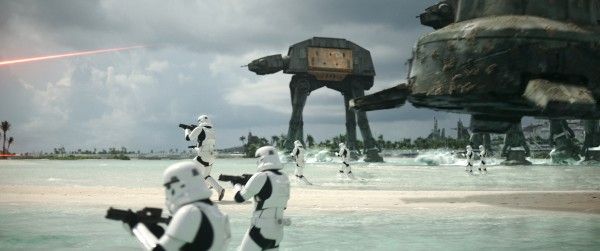This article will contain spoilers for the ending of Rogue One.
Much has been written about the production issues and reshoots with regards to Rogue One: A Star Wars Story, but now that the film is in theaters, I think most can agree that the movie turned out just fine. Moreover, this is a very ambitious film not just in terms of Star Wars, but also with regards to the blockbuster landscape as a whole. I’m speaking mostly about the ending here, in which (again, spoiler alert), everybody dies. It’s a gutsy move, but one that was warranted given that Rogue One is a prequel to A New Hope and these characters don't exactly resurface in Empire Strikes Back. So Lucasfilm basically had license to craft an entire movie around a genuine suicide mission that actually ended in the deaths of all the major characters—save for Darth Vader, of course.
But that wasn’t always the case. As Edwards revealed recently on the Empire podcast, the ending of Rogue One was significantly different early on in the film’s development process:
“The very first version, they didn’t [die]. In the screenplay. And it was just assumed by us that we couldn’t do that. ‘They’re not going to let us do that.’ So I was trying to figure out how this ends where that doesn’t happen. And then everyone read that and there was this feeling of like, ‘They’ve got to die, right?’ And everyone was like, ‘Yeah, can we?’ We thought we weren’t going to be allowed to but Kathy [Kennedy, President of Lucasfilm] and everyone at Disney were like ‘Yeah it makes sense; I guess they have to because they’re not in A New Hope.’ And so from that point on we had the license.”
However, even though Lucasfilm and Disney agreed that all the characters should die, Edwards goes on to say he kept waiting for them to change their mind all throughout production:
“I kept waiting for someone to go, ‘You know what? Could we just film an extra scene where we see Jyn and Cassian, they’re okay and they’re on another planet?’ And it never came. No one ever gave us that note, so we got to do it.”
Whatever your thoughts on the finished film, it's hard to deny that’s an ambitious move on the part of the studio. This franchise was only just relaunched with the four-quadrant-friendly The Force Awakens, so to follow that up with a film that ends so darkly was a gutsy decision. Although you can kind of see where this became an issue throughout post-production, as Michael Giacchino’s score is sometimes anachronistically light and fun during scenes where some pretty dark stuff is happening. Perhaps Lucasfilm was fine with the content of the ending, but needed to hedge their bets with family audiences (not to mention the PG-13 rating) by softening the blow.
Whatever the case, it doesn’t look like we’ll be seeing these Rogue One characters pop up on the big screen anytime soon. Unless a spinoff that takes place before the events of Rogue One surfaces—which isn’t entirely out of the realm of possibility.
For more on Rogue One, peruse our recent coverage below:
- Watch: Forest Whitaker Returns to Voice Saw Gerrera in New 'Star Wars Rebels' Clip
- 'Rogue One': How Gareth Edwards Snuck Unused 'Star Wars' Footage into the Finished Film
- All the Material from the 'Rogue One' Trailers That Didn't Make It Into the Movie
- 'Rogue One: A Star Wars Story' Video Spoiler Review




